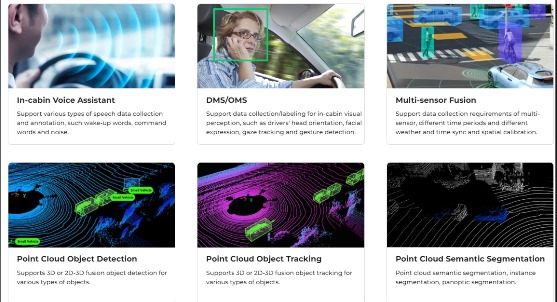Artificial Intelligence (AI) is rapidly transforming industries by automating tasks, predicting outcomes, and uncovering insights. However, the performance of any AI model depends significantly on the quality of its training data. Without accurate and relevant AI training data, even the most advanced algorithms can produce unreliable or biased outcomes. This article will explore the best practices for managing AI training data to ensure it remains accurate, relevant, and fit for purpose.

Understanding the Importance of AI Training Data
AI training data is the foundation upon which machine learning models are built. It refers to the datasets used to teach AI algorithms how to recognize patterns, make predictions, and learn from experience. The better the data, the more effective the model. Poor quality training data can lead to underfitting, overfitting, bias, and incorrect predictions, rendering the AI system ineffective.
The Role of Accuracy and Relevance
Accuracy refers to how correctly the data represents real-world conditions or scenarios. Relevance ensures that the data used aligns closely with the task the AI is designed to perform. Both are critical. Accurate but irrelevant data won’t help the model learn what it needs. Relevant but inaccurate data can mislead the AI system and produce flawed results.
Best Practices for Managing AI Training Data
1. Define Clear Objectives and Data Requirements
Before collecting or curating AI training data, it’s essential to define the goal of the AI project. What problem is the model solving? Who will use it? What inputs and outputs are required?
Once the objectives are clear, you can determine:
- The type of data needed (text, image, audio, structured data, etc.)
- The format and size of the dataset
- Acceptable sources for data collection
- Privacy and compliance considerations
2. Source High-Quality and Diverse Data
Data quality is paramount in AI training. High-quality AI training data should be complete, consistent, and free from errors. Moreover, diversity is just as important to avoid bias. A diverse dataset exposes the AI model to a broad range of scenarios, which improves generalizability.
Key tips:
- Avoid over-representation of certain groups or scenarios
- Include edge cases and variations
- Validate data sources to ensure reliability
3. Clean and Preprocess the Data
Raw data is rarely ready for AI training. Cleaning and preprocessing ensure that the data fed into the model is usable and consistent. This process may involve:
- Removing duplicates
- Filling in or removing missing values
- Correcting inconsistencies
- Normalizing or scaling values
- Formatting text and labels correctly
These steps help in reducing noise and improving the learning efficiency of AI models.
4. Annotate Data Carefully
Data labeling or annotation is a crucial part of managing AI training data. The accuracy of annotations can significantly impact the model’s performance, especially in supervised learning.
To ensure high-quality annotations:
- Use skilled annotators with domain knowledge
- Create clear labeling guidelines
- Leverage annotation tools for consistency
- Conduct regular quality checks and audits
In complex tasks like image recognition or sentiment analysis, consider using multiple annotators and consensus mechanisms to improve label accuracy.
5. Use Automation and Human Oversight
Automation can speed up data processing and annotation, but human oversight remains critical. Automated systems may miss nuances or make mistakes that a human would catch.
Best practice includes:
- Using AI-assisted tools for initial labeling
- Having human reviewers verify and correct outputs
- Continuously training the tools to improve accuracy over time
This hybrid approach combines efficiency with accuracy.
6. Monitor for Bias and Fairness
Bias in AI training data can lead to discriminatory or unfair outcomes. It’s important to regularly evaluate the data for hidden biases and take corrective action.
Steps include:
- Auditing datasets for demographic balance
- Testing model outputs for fairness
- Including data from underrepresented groups
- Being transparent about data sources and limitations
Fair and inclusive training data not only improves performance but also builds trust with users.
7. Maintain Data Relevance
As real-world conditions evolve, training data can become outdated. To ensure relevance:
- Update datasets periodically
- Remove obsolete information
- Monitor changes in user behavior or environmental context
- Retrain models with refreshed data as needed
Dynamic data management helps models stay accurate and reflective of current realities.
8. Secure and Protect Data
With increasing concern around data privacy, securing AI training data is critical. Data breaches can lead to loss of trust, legal issues, and compromised AI systems.
Security best practices:
- Encrypt sensitive data
- Anonymize personal identifiers
- Limit access based on roles
- Comply with regulations like GDPR or HIPAA
Ensure that your data pipeline is robust from collection to storage and usage.
9. Track Data Lineage and Versioning
Understanding where data comes from and how it has changed over time is vital for reproducibility and compliance. Data lineage refers to the data’s origin, movement, and transformation.
Implement tools that:
- Track versions of datasets
- Document preprocessing and annotation steps
- Log changes and decisions made during data handling
This transparency helps with debugging, auditing, and improving future models.
10. Evaluate and Iterate Continuously
Managing AI training data is not a one-time task. Continuous evaluation helps you identify issues early and improve model performance over time.
Key practices:
- Monitor model performance metrics (accuracy, recall, precision)
- Conduct error analysis to identify problematic data points
- Gather user feedback and refine data accordingly
- A/B test different data versions
Iterative improvement ensures that your AI system remains effective and aligned with its goals.
Conclusion
The success of any AI system is closely tied to the quality of its training data. By following these best practices—defining clear objectives, ensuring diversity, cleaning and annotating accurately, preventing bias, maintaining relevance, and securing data—you can create AI training data that is both accurate and relevant. As AI technology evolves, so too must our data management strategies. A thoughtful, well-maintained data pipeline leads to smarter, fairer, and more dependable AI solutions.